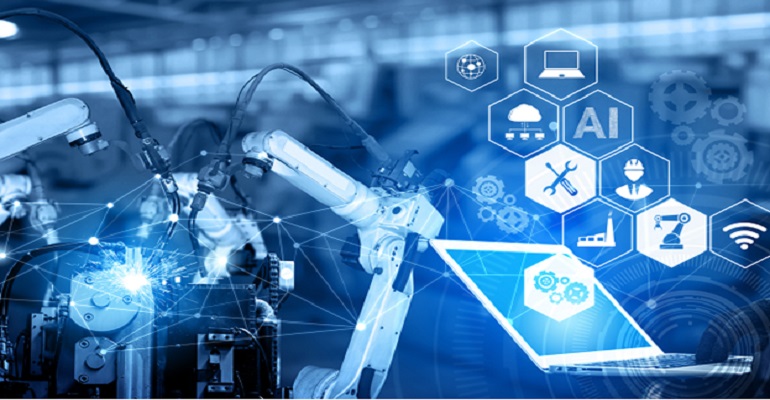Industry Voices: Making Data Actionable with Edge AI
The purpose of edge AI is to process data in real time so the system can respond more quickly than it would with a trip to the cloud.
October 22, 2023

Edge AI and machine learning have become increasingly important in industrial technology settings. With the rise of IoT sensors and smart devices, there is a growing need for edge AI solutions to process data locally and make real-time decisions without relying on cloud services.
TDK’s Qeexo AutoML platform was designed to help developers and companies easily implement AI solutions at the edge without the need for extensive machine learning expertise. The goal is to provide a user-friendly interface and automated feature engineering. According to TDK, Qeexo AutoML can significantly reduce the time and resources needed to develop and deploy edge AI applications.
The need for privacy and security is also important for data processing in industrial applications. With edge AI, data is processed locally without being transmitted to a remote server, ensuring better protection for sensitive data.
Edge AI can improve efficiency and reduce latency in various industries such as manufacturing, healthcare, and transportation. By bringing intelligence closer to the source of data, edge AI enables faster decision-making and real-time monitoring. Altogether, edge AI solutions can help reduce costs and improve performance.
We caught up with Sang Lee, CEO of TDK Qeexo, to dig deeper into the issues and advantages of using edge AI.
Design News: What are the most pressing issues when your customers deploy edge AI and machine learning?
Sang Lee: The adoption of Edge AI faces two primary challenges: first, it creates high-performance models that can run efficiently on edge hardware, and second, it can address the mass deployment challenges associated with customizing and localizing models for optimal performance in diverse environments.
DN: Explain the importance of artificial intelligence in IoT and smart devices.
Sang Lee: Artificial intelligence is vital for IoT and smart devices because it transforms data into actionable insights, enabling real-time decision-making, predictive maintenance, enhanced security, energy efficiency, and personalized user experiences. AI's automation and scalability benefits make IoT devices smarter, more efficient, and adaptable, driving cost savings and reducing environmental impact. It's the cornerstone for realizing the full potential of the IoT ecosystem, revolutionizing industries, and improving the way we interact with our connected environments.
DN: What is “Edge AI,” and how does it help in making real-time decisions?
Sang Lee: “Edge AI” refers to the deployment of AI algorithms and models directly on edge devices, such as IoT devices, rather than relying on a centralized cloud server for processing. It helps in making real-time decisions by bringing AI capabilities closer to the data source, where data is generated, and decisions need to be made.
DN: How does the Qeexo AutoML platform help developers and companies implement AI solutions?
Sang Lee: Qeexo AutoML streamlines machine learning workflows by automating the most labor-intensive tasks, including data cleaning, sensor and feature selection, model choice, hyperparameter optimization, model validation, conversion, and deployment. This automated process enhances efficiency and saves valuable time, as it evaluates numerous options behind the scenes, identifying the most suitable models for your data.
DN: How does Edge AI improve efficiency and reduce latency?
Sang Lee: Processing AI on the edge device allows for immediate handling of all raw sensor data at the source, eliminating the need to transmit raw data to a remote server for processing. This results in enhanced power efficiency and reduced latency.
DN: What are the privacy and security implications?
Sang Lee: Edge AI can process sensitive data locally, without sending it to external servers. This enhances data privacy and security, which is crucial for applications like surveillance and healthcare.
About the Author(s)
You May Also Like




